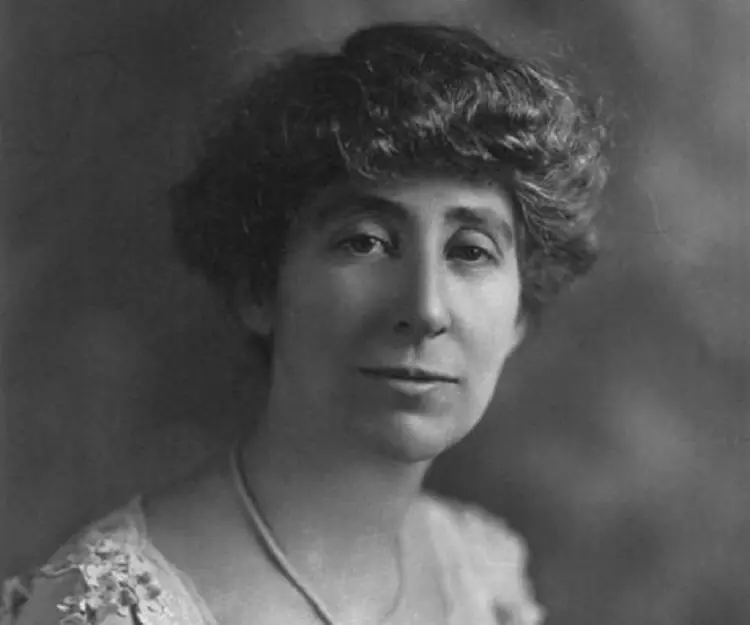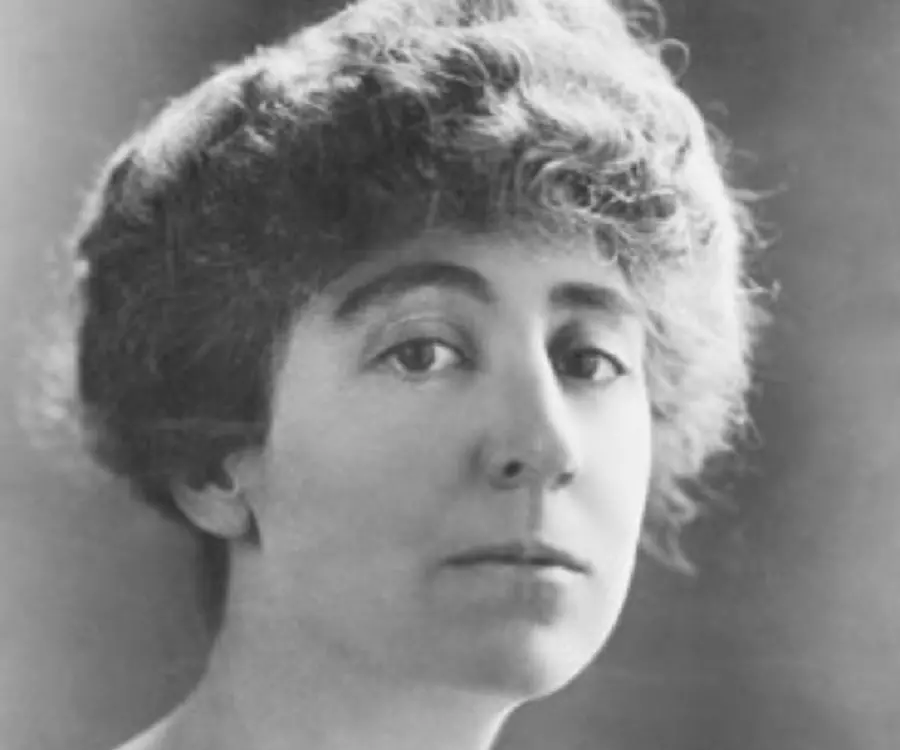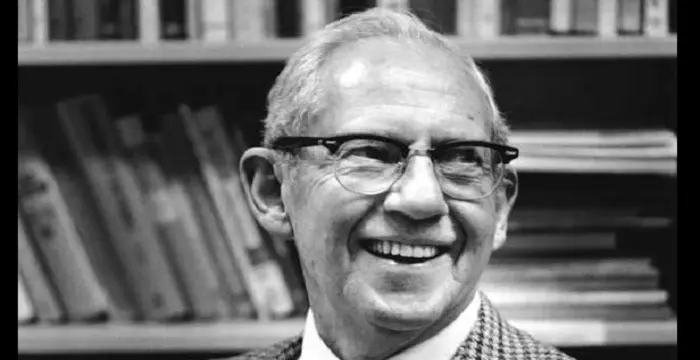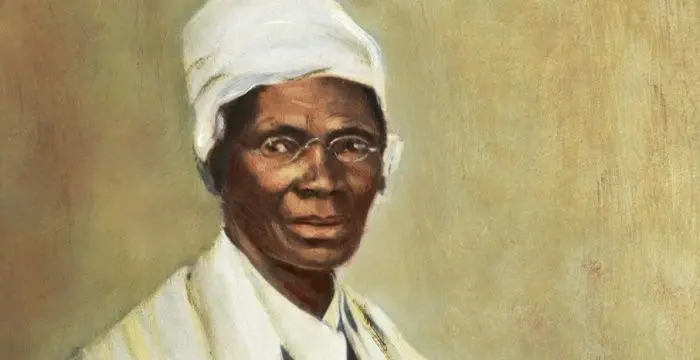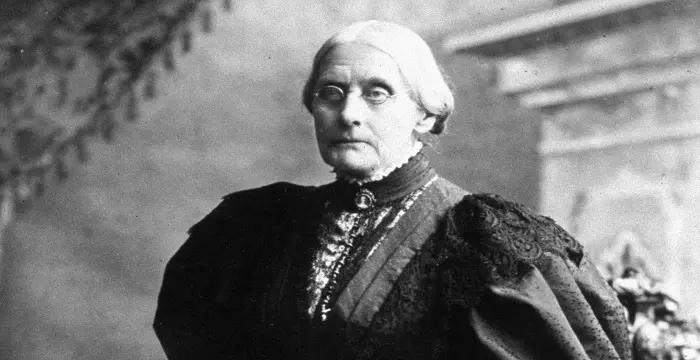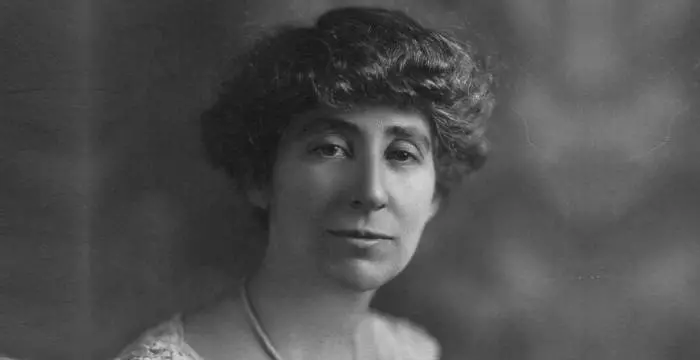
Jeannette Rankin - First Woman Elected to U.s Congress, Timeline and Family
Jeannette Rankin's Personal Details
Jeannette Rankin was the first woman elected to U.S
| Information | Detail |
|---|---|
| Birthday | June 11, 1880 |
| Died on | May 18, 1973 |
| Nationality | American |
| Famous | University Of Washington, Activists, Women's Rights Activists, First Woman Elected to U.s Congress |
| Known as | Рэнкин, Джанет |
| Universities |
|
| Notable Alumnis |
|
| Birth Place | Missoula |
| Gender | Female |
| Sun Sign | Gemini |
| Born in | Missoula |
| Famous as | First Woman Elected to U.S Congress |
| Died at Age | 92 |
Jeannette Rankin's photo
Who is Jeannette Rankin?
Jeannette Rankin was the first woman elected to U.S. Congress. At the time when Rankin was elected to the United States Congress, female participation in politics was unheard of. Rankin’s entry into politics was a gradual process. She started off as a social worker, lobbying for women suffrage movement. It was due to her tireless efforts that the Nineteenth Amendment was passed which secured women the right the vote across America. Though the feat was a remarkable achievement in Rankin’s political career, it was her pacifist foreign policy that defined much of her congressional terms. Rankin became the only member of the Congress to vote against the US entry into World War I and World War II. While her opposition for World War I received support from 49 other Congresspersons, her pacifism against World War II raised outrage as she was the only person to vote against war. Rankin’s adamant pacifist stance was noteworthy. Though her commitment towards anti-war sentiments was largely ridiculed for much of her life, it was only towards the end that she became an inspiration for numerous other women activists and pacifists.
// Famous University Of Washington
George Joseph Stigler
George Stigler was one of the most influential economists of the 20th century. Check out this biography to know about his childhood, family life, achievements and other facts related to his life.
Amanda Knox
Amanda Marie Knox is an American writer and activist who had to spend almost four years in an Italian prison for a wrongful conviction.
Joel McHale
Joel McHale is an American comedian, actor, producer, host, and writer. Check out this biography to know about his birthday, childhood, family life, achievements and fun facts about him.
Childhood & Early Life
Jeannette Rankin was born on June 11, 1880, near Missoula, Montana, Olive Pickering Rankin and John Rankin. She was eldest among the six siblings. While her mother was a school teacher, her father worked as an immigrant carpenter and rancher.
Since Jeannette was the eldest child of the family, she assisted her parents in daily chores and outdoor works. She also took care of her younger siblings. Hardworking and laborious, she helped maintain the ranch machinery.
Academically, Rankin attended high school and later enrolled at the University of Montana. She graduated in 1902 with a B.Sc. degree in biology.
Career
After completing her studies, Jeannette Rankin initially tried her hands in various professions such as dressmaking, furniture designing and social work.
In 1908, after realising that her true passion lies in social work, she enrolled in the New York School of Philanthropy in New York City and passed out from the school in 1909..
In 1909, Rankin relocated to Spokane, Washington. Therein, she attended the University of Washington. It was while at the university that she became involved in the women suffrage movement. Soon, she organized the New York Women’s Suffrage Party and served as a lobbyist for the National American Woman Suffrage Association. In 1910, Washington voters approved an amendment to their state constitution permanently enfranchising women; Washington became the fifth state in the Union to do so.
In 1911, Rankin created history by becoming the first woman to speak before the Montana legislature. Therein, she made her case for women’s suffrage. She actively worked to make amendments in the state constitution that would give women the right to vote. Her hard work finally paid off in 1914 as Montana granted women unrestricted voting rights.
In 1916, Rankin ran for a seat in the US House of Representative. After extensive campaigning and travelling, she finally emerged victorious, becoming the first woman to serve in the Congress.
Rankin’s service as a member of the House of Representative began on a dramatic note. The Congress summoned an extraordinary April session to take votes for participation in the war waged by Germany. A committed pacifist, Rankin did not shy away and openly voted against war, thus becoming one of the fifty people in opposition against War.
During the war, Rankin served for the cause of right of women who took part in the war effort. She also acted as a catalyst in making the movement for voting rights become a universal enfranchisement. By 1918, she had successfully helped women gain voting rights in forty states.
In 1919, Rankin’s effort women paid off as the Nineteenth Amendment was passed by the United States Congress that granted women right to vote.
Rankin’s congressional term ended in 1919 and thereafter she focused her energies on pacifism and social work. She was one of the delegates for the Women’s International Conference for Permanent Peace in Switzerland in 1919. Later, she joined the Women’s International League for Peace and Freedom and became an active member.
During the early 1920s, Rankin served as a field secretary for the National Consumers League. In this profile, she lobbied the Congress to pass several social welfare legislations such as banning of child labour and passage of Sheppard-Towner Act.
In 1928, Rankin founded the Georgia Peace Society. The Society served as a headquarters for her pacifism campaign. From 1929 to 1939, she became a leading lobbyist and speaker for the National Council for the Prevention of War. She also remained active in advocating social welfare programs.
A war crisis in 1940 led Rankin to resume her political career. She successfully ran for a seat in the US House of Representative, defeating incumbent Jacob Thorkelson. Following her victory, she was appointed in the Committee on Public Lands and the Committee on Insular Affairs.
Similar to her first congressional term, the threat of war was looming over US yet again, this time World War II. Rankin was adamant on his pacifist stand and was strongly against U.S. intervention in the World War II, even after the attack on Pearl Harbour on December 7, 1941 that had silenced much of the anti-war sentiments.
The Congressional meeting on December 8, 1941 was iconic as Rankin became the only member in both the Houses of Congress to vote against the declaration of war against Japan. The war resolution passed against 388-1 votes. Her pacifist stand was mocked by press and public alike who were outraged by her opposition. Also, it marked the end of her political career.
Rankin retired from active politics in 1942, rather than face a certain defeat in the re-elections. Post politics, Rankin spent much of her later life travelling. She studied Mahatma Gandhi’s pacifist teachings and non-violence protest tactics.
Rankin’s pacifist policies became highly inspirational for pacifists, feminists and civil right advocates during the 1960s and 70s. It was in 1968 that Rankin yet again came to prominence for leading from front the Jeannette Rankin Brigade, a coalition of women's peace groups, in its anti-war march in Washington, DC against Vietnam War.
Major Works
Though Jeannette Rankin is best remembered for her pacifism and her opposition against U.S. entry in World War I and II, one cannot deny her contribution in the women suffrage movement. She played a pivotal role in the passage of the Nineteenth Amendment that secured voting rights for women.
Personal Life & Legacy
Jeannette Rankin breathed her last on May 18, 1973 in Carmel, California. Till the end of her life, Rankin committed her life to pacifism and fought against US participations in war.
For her tireless effort on women suffrage and pacifism, Rankin has been memorialized. A statue of her rests in United States Capitol’s Statuary Hall with the inscription ‘I Cannot Vote for War’
Trivia
She was the first woman member of the U.S. Congress and the only member to vote against US entry into World War II.
// Famous Women's Rights Activists
Emily Greene Balch
Emily Greene Balch was an American economist, sociologist and pacifist who won the 1946 Nobel Peace Prize. This biography of Emily Greene Balch provides detailed information about her childhood, life, achievements, works & timeline.
Sojourner Truth
Sojourner truth was an African American abolitionist who was the first black woman to win a case against a white man. This biography provides detailed information about her childhood, life, achievements, works & timeline.
Susan B. Anthony
Susan B. Anthony was an American feminist who played a major role in the women's suffrage movement. This biography of Susan B. Anthony provides detailed information about her childhood, life, achievements, works & timeline
Jeannette Rankin biography timelines
- // 11th Jun 1880Jeannette Rankin was born on June 11, 1880, near Missoula, Montana, Olive Pickering Rankin and John Rankin. She was eldest among the six siblings. While her mother was a school teacher, her father worked as an immigrant carpenter and rancher.
- // 1902Academically, Rankin attended high school and later enrolled at the University of Montana. She graduated in 1902 with a B.Sc. degree in biology.
- // 1908 To 1909In 1908, after realising that her true passion lies in social work, she enrolled in the New York School of Philanthropy in New York City and passed out from the school in 1909..
- // 1909 To 1910In 1909, Rankin relocated to Spokane, Washington. Therein, she attended the University of Washington. It was while at the university that she became involved in the women suffrage movement. Soon, she organized the New York Women’s Suffrage Party and served as a lobbyist for the National American Woman Suffrage Association. In 1910, Washington voters approved an amendment to their state constitution permanently enfranchising women; Washington became the fifth state in the Union to do so.
- // 1911 To 1914In 1911, Rankin created history by becoming the first woman to speak before the Montana legislature. Therein, she made her case for women’s suffrage. She actively worked to make amendments in the state constitution that would give women the right to vote. Her hard work finally paid off in 1914 as Montana granted women unrestricted voting rights.
- // 1916In 1916, Rankin ran for a seat in the US House of Representative. After extensive campaigning and travelling, she finally emerged victorious, becoming the first woman to serve in the Congress.
- // 1918During the war, Rankin served for the cause of right of women who took part in the war effort. She also acted as a catalyst in making the movement for voting rights become a universal enfranchisement. By 1918, she had successfully helped women gain voting rights in forty states.
- // 1919In 1919, Rankin’s effort women paid off as the Nineteenth Amendment was passed by the United States Congress that granted women right to vote.
- // 1919Rankin’s congressional term ended in 1919 and thereafter she focused her energies on pacifism and social work. She was one of the delegates for the Women’s International Conference for Permanent Peace in Switzerland in 1919. Later, she joined the Women’s International League for Peace and Freedom and became an active member.
- // 1928 To 1939In 1928, Rankin founded the Georgia Peace Society. The Society served as a headquarters for her pacifism campaign. From 1929 to 1939, she became a leading lobbyist and speaker for the National Council for the Prevention of War. She also remained active in advocating social welfare programs.
- // 1940A war crisis in 1940 led Rankin to resume her political career. She successfully ran for a seat in the US House of Representative, defeating incumbent Jacob Thorkelson. Following her victory, she was appointed in the Committee on Public Lands and the Committee on Insular Affairs.
- // 7th Dec 1941Similar to her first congressional term, the threat of war was looming over US yet again, this time World War II. Rankin was adamant on his pacifist stand and was strongly against U.S. intervention in the World War II, even after the attack on Pearl Harbour on December 7, 1941 that had silenced much of the anti-war sentiments.
- // 8th Dec 1941The Congressional meeting on December 8, 1941 was iconic as Rankin became the only member in both the Houses of Congress to vote against the declaration of war against Japan. The war resolution passed against 388-1 votes. Her pacifist stand was mocked by press and public alike who were outraged by her opposition. Also, it marked the end of her political career.
- // 1942Rankin retired from active politics in 1942, rather than face a certain defeat in the re-elections. Post politics, Rankin spent much of her later life travelling. She studied Mahatma Gandhi’s pacifist teachings and non-violence protest tactics.
- // 1968Rankin’s pacifist policies became highly inspirational for pacifists, feminists and civil right advocates during the 1960s and 70s. It was in 1968 that Rankin yet again came to prominence for leading from front the Jeannette Rankin Brigade, a coalition of women's peace groups, in its anti-war march in Washington, DC against Vietnam War.
- // 18th May 1973Jeannette Rankin breathed her last on May 18, 1973 in Carmel, California. Till the end of her life, Rankin committed her life to pacifism and fought against US participations in war.
// Famous Activists
Temple Grandin
Temple Grandin is a well-known American writer, autistic activist and animal expert. This biography profiles her childhood, life, achievements, career and timeline
Susan Sontag
Susan Sontag is an American critical essayist, cultural analyst, novelist, political activist, filmmaker and playwright of international repute. Read on to find out more about her childhood, career, profile and timeline.
Serj Tankian
Serj Tankian is a famous American singer-songwriter and member of the band, ‘System of a Down’. This biography profiles his childhood, music career, life, achievements and timeline.
Gaia Wise
Gaia Wise is an actress, environment activist and the daughter of Emma Thompson. Check out this biography to know about her childhood, family, personal life, including her age, birthday, etc.
Sojourner Truth
Sojourner truth was an African American abolitionist who was the first black woman to win a case against a white man. This biography provides detailed information about her childhood, life, achievements, works & timeline.
Garry Kasparov
Garry Kasparov is a Russian chess Grandmaster considered by many to be the greatest chess player of all time. This biography of Garry Kasparov provides detailed information about his childhood, life, achievements, works & timeline.
Jeannette Rankin's FAQ
What is Jeannette Rankin birthday?
Jeannette Rankin was born at 1880-06-11
When was Jeannette Rankin died?
Jeannette Rankin was died at 1973-05-18
Where was Jeannette Rankin died?
Jeannette Rankin was died in Carmel-by-the-Sea
Which age was Jeannette Rankin died?
Jeannette Rankin was died at age 92
Where is Jeannette Rankin's birth place?
Jeannette Rankin was born in Missoula
What is Jeannette Rankin nationalities?
Jeannette Rankin's nationalities is American
What was Jeannette Rankin universities?
Jeannette Rankin studied at University Of Washington, University of Washington, University of Montana
What was Jeannette Rankin notable alumnis?
Jeannette Rankin's notable alumnis is University Of Washington
What is Jeannette Rankin's sun sign?
Jeannette Rankin is Gemini
How famous is Jeannette Rankin?
Jeannette Rankin is famouse as First Woman Elected to U.S Congress
